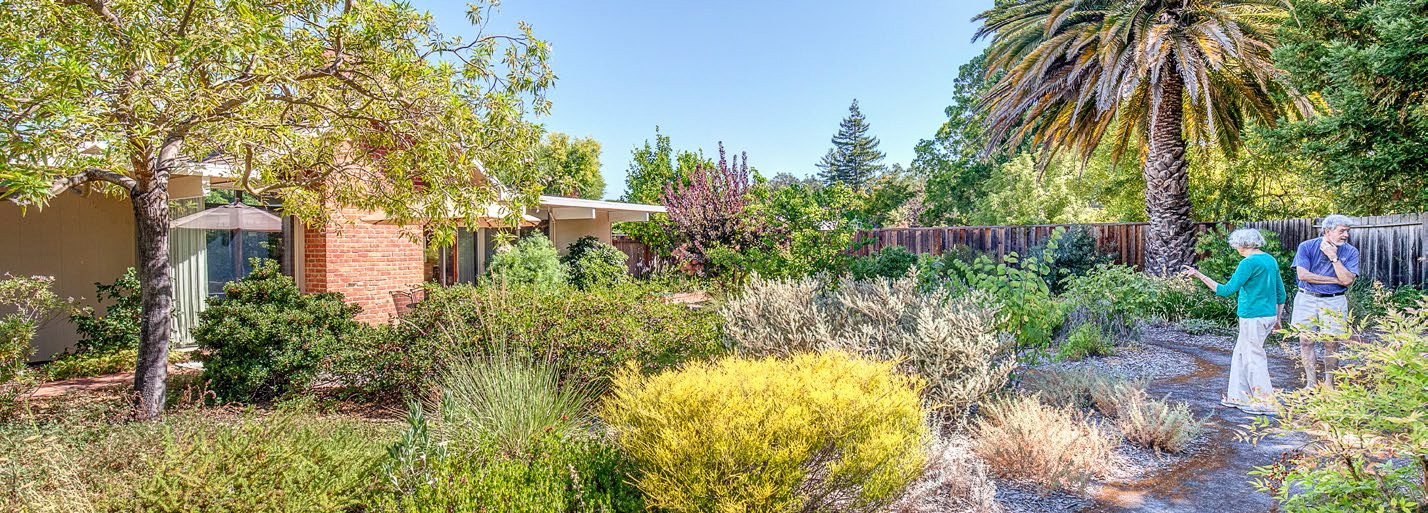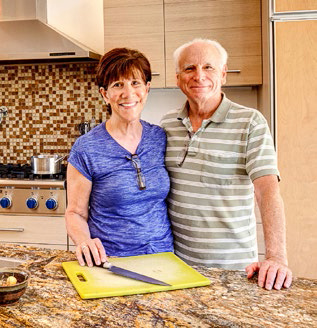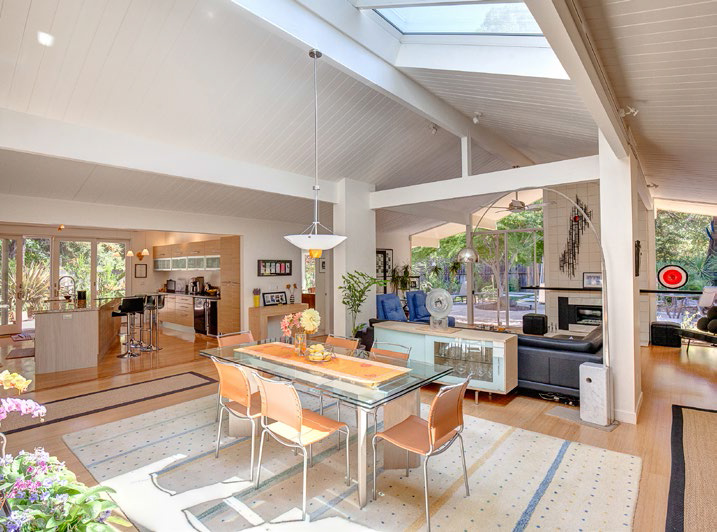Pride Runs Deep - Page 2
 |
|
|
 |
 |
|
dining area. |
|
|
|
|
'In the old days a good number of people were engineers or in technical fields,' many working in Sunnyvale, recalls Lovoi, who says of his profession, 'I start companies.'
Bob and Liz Owen, residents since 1975, recall how multi-cultural the tract was then, though primarily white. There were families from Holland and France, and Bob and Liz remember neighbors from Germany and Japan too.
'We used to joke about refighting the Second World War,' says Bob, an engineer.
Elyse's parents paid $34,000 for the home, plus $5,000 for a pool and landscaping. 'I've had people come to my door and offer me $2 million for my house,' she says, adding that the home remains '85 percent original.'
De Havilland Drive circles the neighborhood, forming a natural boundary. (It was named for movie star Olivia De Havilland, who lived in the area in the 1920s and went on to cinematic fame as Maid Marion in 'The Adventures of Robin Hood' and Melanie in 'Gone with the Wind.')
An official tract map shows that Eichler planned to fill all of De Havilland and several nearby streets with Eichler homes.
Today the neighborhood, which has a cluster of Eichlers plus some ranch-style homes and later homes, is generally referred to as 'De Havilland-Cox.' William Cox, namesake of Cox Avenue, which borders the tract, was a pioneering settler and orchardist, famed for his 'Double X' prune. His son Joseph's 1915 bungalow stands nearby, providing a touch of history.
Across from the Cox bungalow and serving as sentries as you enter the Eichlers of Saratoga are stately olive trees set in wide concrete planters, part of the original landscape design.
One story told in the neighborhood, and here from Paul Lovoi, has it that 'Eichler planned to make this whole area Eichlers.' Lovoi says. 'But the city of Saratoga gave him grief about his beams, the way the houses were built. So Eichler threw up his hands and said, 'Build something else. I'm going away.'' Lovoi acknowledges that the tale is hearsay.
It's also unlikely. Given Eichler's success building in cities throughout the Bay Area and beyond, how could Saratoga bureaucrats have stopped him?
More likely the tract suffered along with several other of his subdivisions in the mid-1960s, as Eichler Homes faced cash flow problems due to urban ventures and moved towards bankruptcy.
Still, the neighborhood is impressive, with some of the largest homes in the Eichler oeuvre, many 2,400 square feet, and some of the grander plans.
Lloyd Binen and his wife, the ceramicist Joyce Clark-Binen, own one model that is common to the neighborhood but rare elsewhere. It features an atrium, with four walls of glass all around it, that serves not as an entry to the house but as a space surrounded entirely by living area.
The design is by Claude Oakland. Eichler's brochure for the neighborhood also mentions Jones & Emmons and his in-house architect John Brooks Boyd as other home designers of the tract.




